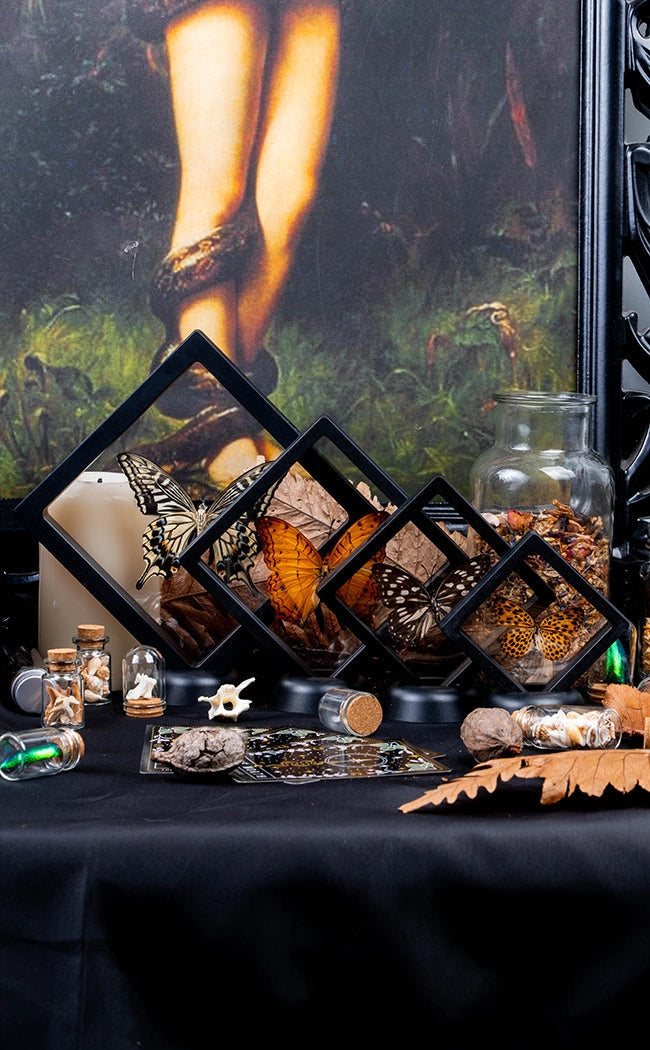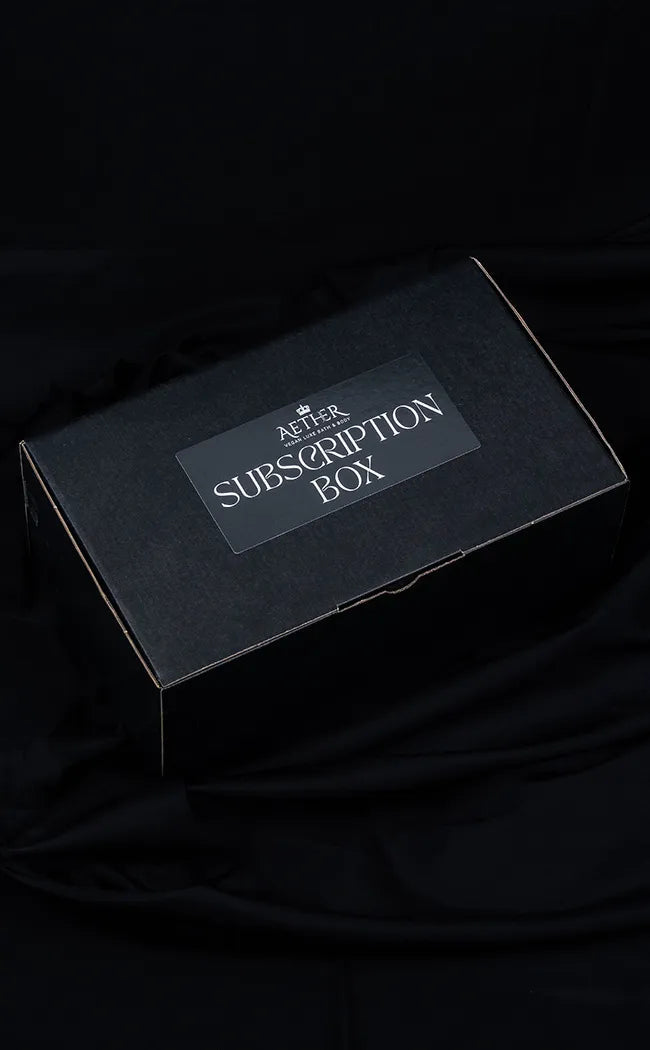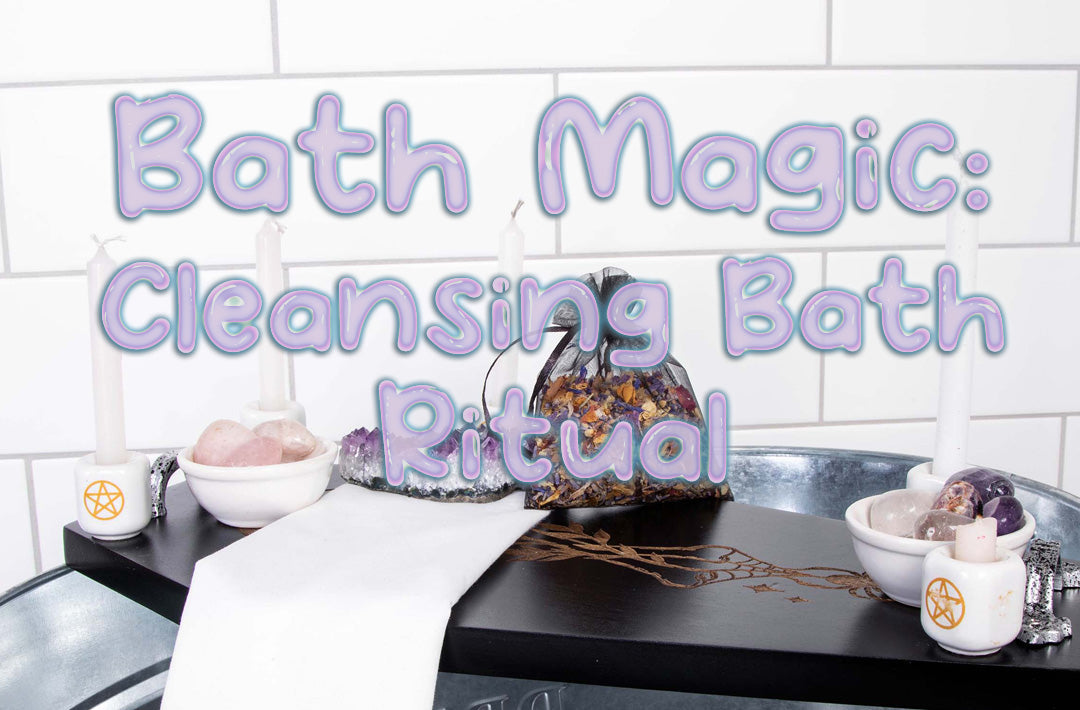FROM WHENCE CAME THE THING THAT BUBBLES, BUBBLES, TOILS & TROUBLES?
When you think of witchcraft, what comes to mind? Some of you may have said broomsticks, some might have even said black cats. But, undoubtedly, most of you will have also said cauldrons. But why is this? How did the cauldron become a quintessentially witchy item? Let's take a quick look at the history of the cauldron, how it's used today and, most importantly, how to choose your own.

WHAT IS A CAULDRON?
Cauldrons originated from the Bronze Age and were originally used as a vessel for food and serving meals, hung over a fire to boil water, cook food, and serve the resulting meal. Their familiar presence at the hearth of most households made them evolve beyond a tool and into a beloved symbol of food distribution; the 3000-year-old Battersea Cauldron, for example, was obviously treasured, showing evidence that it was repaired and patched over time. According to the British Museum Blog, it was recovered from the River Thames, which seems a rather unusual place to find a cooking pot. In fact, rivers and bogs are actually common recovery sites for cauldrons; these locations are described as domains that lie between the worlds of the living and the dead, further reinforcing the vessel’s mystical connections.
Representations of cauldrons in folklore include that of Cerrridwen, the Welsh crone with her cauldron of wisdom and The Dagda, the Irish God king whose cauldron would never empty. This, in addition to depictions in literature like the three witches in William Shakespeare’s Macbeth, forever associated cauldrons with witches.

OKAY, BUT WHY DO WITCHES USE CAULDRONS TODAY?
A witch’s power comes from within herself, but a witch’s tools, including cauldrons, allow them to amplify and channel their power. In modern witchcraft practices and Wicca, the cauldron represents the divine feminine, symbolising the Goddess and her womb as well as the power of transformation.
In practice, cauldrons can be used with charcoal discs to burn offerings of herbs, petitions and incense during spellcasting and rituals. A cauldron can also be used to mix herbs into potions and poultices, much like its historical counterparts.
Because the cauldron is both a vessel and used with practices involving open flames, it can represent the element of Fire and stand in for the chalice to represent Water in Wiccan rituals.

HOW MUCH DOES A CAULDRON WEIGH?
The weight of a cauldron depends on its size and the material it is made out of. You might typically think of cast iron cauldrons when you imagine what a cauldron looks like, and these can get heavy - a jumbo cast iron cauldron can weigh up to 4kg!
Lighter cauldrons are usually made from brass and aluminium, and normally don't weigh more than 1kg.
SO, WHICH CAULDRON SHOULD I USE?
This mostly comes down to personal preference, but there are a few factors to keep in mind when choosing a cauldron: how large do you want your cauldron to be? Will you be travelling with it? Will you be using it indoors or outdoors? Here are a few features to keep in mind:
- Handle: if you’re planning on travelling or moving your cauldron from room to room while burning incense or herbs, a handle is a must for your own safety.
- Lid: lidded cauldrons are necessary if you need to keep smoke from escaping for ritual purposes, as well as to keep yourself, pets and children from inhaling it unnecessarily.
- Legs: Many cauldrons will come with 3 legs, aka a “tripod”. These keep the cauldron from burning or damaging your altar and are highly recommended if you plan on burning charcoal.
- Symbols & Shape: This may seem like a purely aesthetic choice, but your personal connection to your cauldron is very important. Choosing a cauldron that represents your tradition, your deity, or even one you just “vibe” with will allow you to better channel your power and achieve success in your work. Take your time and choose the cauldron that speaks to you.
The most popular option is undoubtedly the cast iron cauldron: these hardy and durable vessels are heat safe and retain heat for a long time, meaning they can be used with open flames as well as charcoal discs. Cast iron is quite heavy, meaning that larger cauldrons may be a little more difficult to use indoors. You can see an example of a smaller cast iron cauldron here and a larger cast iron cauldron here.
If you need something lighter than cast iron, brass and aluminium cauldrons are great alternatives. Unlike cast iron, they cannot be used over open flames as this can damage them. However, they’re perfectly safe to use with incense discs and are often more affordable, making them a great choice for beginners. This plain aluminium cauldron is very light and portable, while this brass pentagram cauldron is a charming silver for those looking for something different.
If you're ready to find your first cauldron, or want to upgrade, check out our full collection here for cauldrons of all shapes, sizes and colours.


























































































































































































